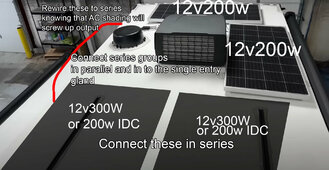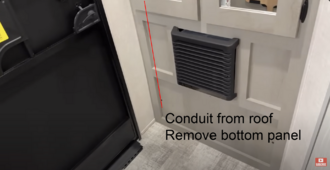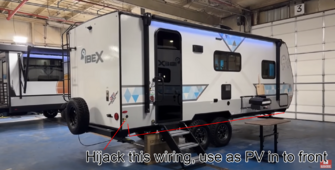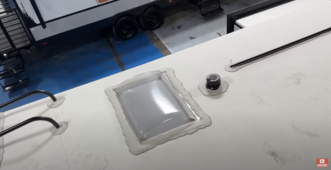I'm sure I knew this at some point and it's the crux of my wall of text post here where I'm planning my new camper build. Since that's probably a TL;DR and I have a concise more noobish question that could influence a lot of my decisions, I'll pose it here.
Situation: 2 12v panels already supplied from factory in parallel, one entry gland and I don't want to drill the roof again. One panel definitely will get shaded from AC unit.

I would like to utilize the tracks seen in photo for more solar but want to step the voltage up. Here's a proposed idea that leads to the 101 question:

The question: If a panel is shaded in a series group, does it nuke the entire system's power, or just the power from that series group?
I could live with occasions where the panel to the right of the AC unit reduces the output of those two 200w panels from 400w to 25w as long as the rear panels kept chugging.
Additional question: Would there be any reason to not use 300w panels on the rear, the largest 12v I can find? I can't recall the rules for paralleling series groups and if it has to do with matching current.
Thank you, and f me it's still a TL;DR lol
Situation: 2 12v panels already supplied from factory in parallel, one entry gland and I don't want to drill the roof again. One panel definitely will get shaded from AC unit.
I would like to utilize the tracks seen in photo for more solar but want to step the voltage up. Here's a proposed idea that leads to the 101 question:

The question: If a panel is shaded in a series group, does it nuke the entire system's power, or just the power from that series group?
I could live with occasions where the panel to the right of the AC unit reduces the output of those two 200w panels from 400w to 25w as long as the rear panels kept chugging.
Additional question: Would there be any reason to not use 300w panels on the rear, the largest 12v I can find? I can't recall the rules for paralleling series groups and if it has to do with matching current.
Thank you, and f me it's still a TL;DR lol
Last edited:







